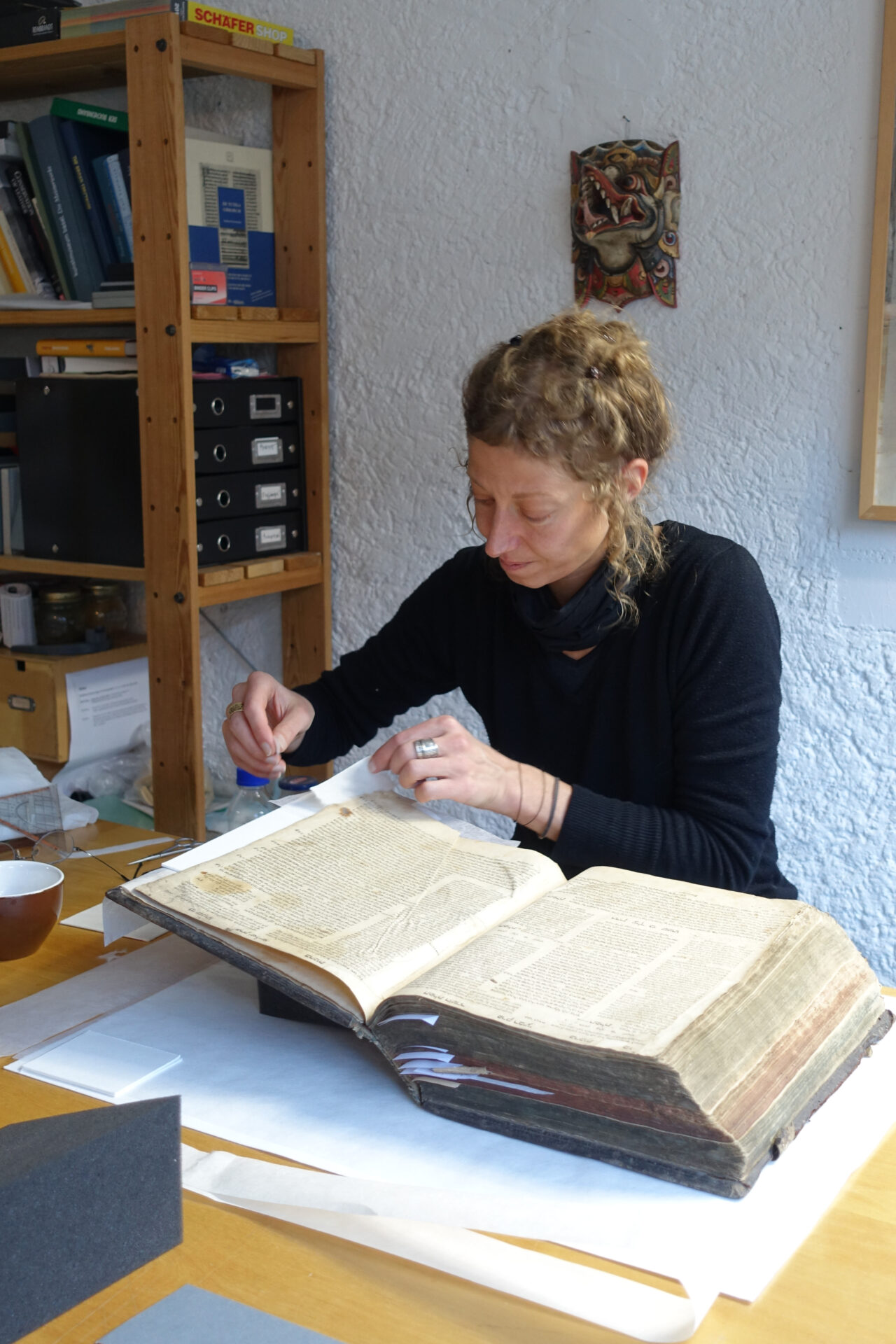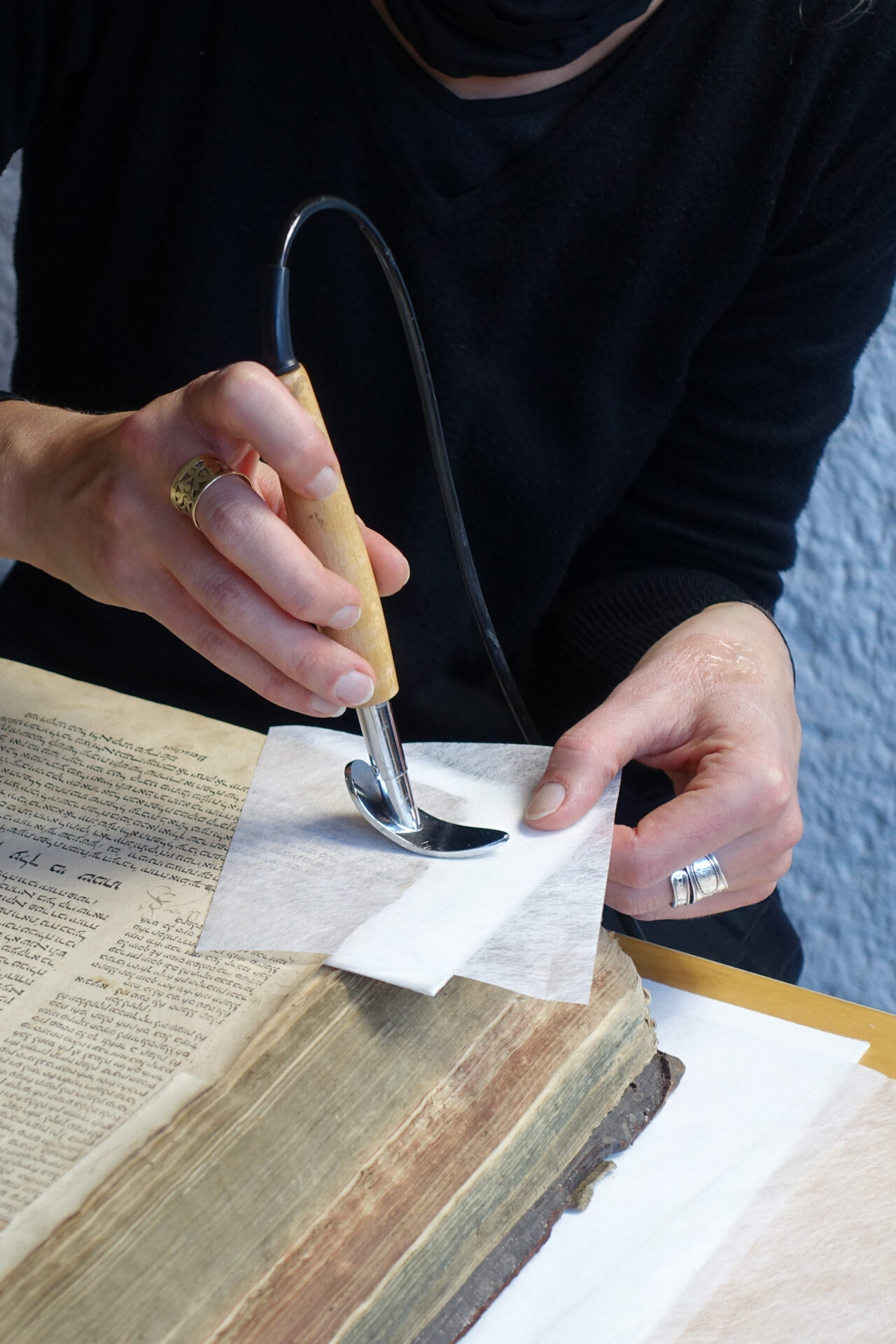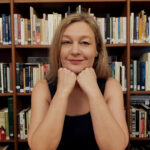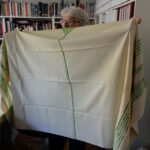Our «Patchwork»-Talmud
Four questions to Anna Rabin
In 2018, Anna Rabin, the former curator of the Jewish Museum of Switzerland, made a discovery: Our Talmud, printed in 1578 in Basel by Ambrosius Froben, included pages from the workshop of the Venetian printer Daniel Bomberg from 1522/8, fifty years earlier. Anna Rabin spoke to museum director Naomi Lubrich about what she found in the book since then.
NL: Anna, you worked for the Jewish Museum of Switzerland for 15 years. What was it like to discover that in one of our most important books, the pages didn’t match?
AR: At that moment, my heart began to beat. I thought, «That can’t be!» then, «What’s going on?» That’s when I began to take a close look at the book. I tried to be objective and calm. When it became clear that some of the prints did not come from Basel, but from Bomberg’s unique workshop in Venice, I began to turn the pages reverently. Realizing that you have something very special and unique in your hands is a sublime moment that every museum employee dreams of.
NL: We will never know why the pages were bound together. But you decided to look at the handwritten notes in the book to learn more about where it was used. What was your biggest challenge?
AR: I had three big challenges. The first was to keep an open mind and not read something into the notes that might not be there. The second was understanding and deciphering the handwriting itself. No two handwritings are alike. The third was time: I went through the inscriptions again and again over a long period of time to check decipherments, possibly to correct or even revise them. This required strong nerves, calmness, and perseverance.
NL: What did you discover?
AR: The handwritten notes suggest that the book was used in various Jewish communities in southern Germany and the Czech Republic over the past four hundred years. One tractate was used in the town of Usov (Czech Republic). Some notes might be read as «Sulzburg,» another as «Metz.» But this is an interpretation and not certain, since the Hebrew text allows a certain range of variations in vocalization. Nevertheless, it is likely that the volume was used in Sulzburg, which is not far from Basel. And Metz had an important Jewish community with important scholars.
NL: What might the community have been like? What kind of lives did the scholars lead?
AR: We don’t know much about the scholars’ curriculum or how they taught. But we do know that these communities were very modest. The scholars devoted much of their daily lives to studying religious scripture for as many hours as daylight permitted. The Talmud would have been an extraordinarily precious cultural and religious source of knowledge for them.
NL: Thank you very much!
Anna Rabin is now a staff member at the Albert Einstein Archive in Jerusalem.
verfasst am 06.07.2022
Photo: The restorer Silvana Schmid works on the talmud.





